This is an old revision of this page, as edited by LindsayH (talk | contribs) at 11:22, 28 May 2021 (→Alternative names: The identical file is literally immediately below the gallery; duplication is unnecessary). The present address (URL) is a permanent link to this revision, which may differ significantly from the current revision.
Revision as of 11:22, 28 May 2021 by LindsayH (talk | contribs) (→Alternative names: The identical file is literally immediately below the gallery; duplication is unnecessary)(diff) ← Previous revision | Latest revision (diff) | Newer revision → (diff) A marginal sea of the northern Indian Ocean between the Arabian Peninsula and India| Arabian Sea | |
|---|---|
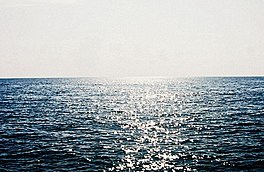 | |
 | |
| Location | Horn of Africa, Western Asia and South Asia |
| Coordinates | 14°N 65°E / 14°N 65°E / 14; 65 |
| Type | Sea |
| Part of | Indian Ocean |
| Basin countries | India Iran Maldives Oman Pakistan Somalia Yemen |
| Max. width | 2,400 km (1,500 mi) |
| Surface area | 3,862,000 km (1,491,000 sq mi) (3,600,000 to 4,600,000 km2 in various sources) |
| Max. depth | 4,652 m (15,262 ft) |
| Islands | Astola island, Basavaraja Durga Island, Lakshadweep, Masirah Island, Piram Island, Pirotan, Socotra |
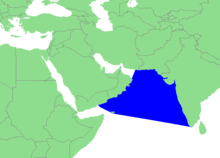


The Arabian Sea (Template:Lang-ar Bahr al-Arab) is a region of the northern Indian Ocean bounded on the north by Pakistan, Iran, and the Gulf of Oman, on the west by the Gulf of Aden, Guardafui Channel and the Arabian Peninsula, on the southeast by the Laccadive Sea, on the southwest by the Somali Sea, and on the east by India. Its total area is 3,862,000 km (1,491,000 sq mi) and its maximum depth is 4,652 meters (15,262 ft). The Gulf of Aden in the west connects the Arabian Sea to the Red Sea through the strait of Bab-el-Mandeb, and the Gulf of Oman is in the northwest, connecting it to the Persian Gulf.
The Arabian Sea has been crossed by many important marine trade routes since the 3rd or 2nd millennium BCE. Major seaports include Kandla Port, Mundra Port, Pipavav Port, Dahej Port, Hazira Port, Mumbai Port, Nhava Sheva Port (Navi Mumbai), Mormugão Port (Goa), New Mangalore Port, Vizhinjam International Seaport and Kochi Port in India, the Port of Karachi, Port Qasim, and the Gwadar Port in Pakistan, Chabahar Port in Iran and the Port of Salalah in Salalah, Oman. The largest islands in the Arabian Sea include Socotra (Yemen), Masirah Island (Oman), Lakshadweep (India) and Astola Island (Pakistan).
Geography
The Arabian Sea's surface area is about 3,862,000 km (1,491,130 sq mi). The maximum width of the sea is approximately 2,400 km (1,490 mi), and its maximum depth is 4,652 metres (15,262 ft). The biggest river flowing into the sea is the Indus River.
The Arabian Sea has two important branches — the Gulf of Aden in the southwest, connecting with the Red Sea through the strait of Bab-el-Mandeb; and the Gulf of Oman to the northwest, connecting with the Persian Gulf. There are also the gulfs of Khambhat and Kutch on the Indian Coast.
The countries with coastlines on the Arabian Sea are Yemen, Oman, Pakistan, Iran, India and the Maldives.
Limits
The International Hydrographic Organization defines the limits of the Arabian Sea as follows:
- On the west: the eastern limit of the Gulf of Aden.
- On the north: a line joining Ràs al Hadd, east point of the Arabian Peninsula (22°32'N) and Ràs Jiyùni (61°43'E) on the coast of Pakistan.
- On the south: a line running from the southern extremity of Addu Atoll in the Maldives, to the eastern extremity of Ràs Hafun (the easternmost point of Africa, 10°26'N).
- On the east: the western limit of the Laccadive Sea a line running from Sadashivgad on the west coast of India (14°48′N 74°07′E / 14.800°N 74.117°E / 14.800; 74.117) to Cora Divh (13°42′N 72°10′E / 13.700°N 72.167°E / 13.700; 72.167) and thence down the west side of the Laccadive and Maldive archipelagos to the most southerly point of Addu Atoll in the Maldives.
Border and Basin countries
Border and Basin countries:
Alternative names
The Arabian Sea historically and geographically has been referred to with many different names by Arabian and European geographers and travelers, including Indian Sea, Sindhu Sagar, Darya, Sindhu Sagar, and Arab Samudra, Erythraean Sea, Sindh Sea, and Akhzar Sea. In Indian folklore, it is referred to as Darya, Sindhu Sagar, and Arab Samudra.
Arab sailors and nomads used to call this sea by different names, including the green sea, the ocean sea, the Hindu sea, the Makran Sea, the Gulf of Oman, and among them the Zakariya al-Qazwini, Al-Masudi and Ibn Hawqal. They wrote: “The green sea in the east and the sea of darkness in the west is the sea of strange creatures (Zakariya al-Qazwini) And the enchanted islands (Al-Masudi) (Hafiz-i Abru).
-
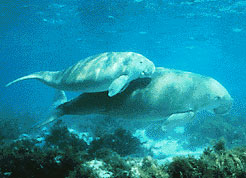 Dugong mother and her offspring in shallow waters.
Dugong mother and her offspring in shallow waters.
-
Basora-Persian Sea.
-
 Soulier, E.; Andriveau-Goujon, MER ERYTHREE 1838.
Soulier, E.; Andriveau-Goujon, MER ERYTHREE 1838.
-
 Critically endangered Arabian humpback whales off Dhofar, Oman.
Critically endangered Arabian humpback whales off Dhofar, Oman.
-
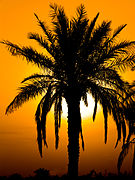 Palm and sunset in Minoo Island, Iran.
Palm and sunset in Minoo Island, Iran.
-
 A horizontal Malabar Coast miniature, a reprint by Petrus Bertius, 1630
A horizontal Malabar Coast miniature, a reprint by Petrus Bertius, 1630
-
 1658 Jansson Map of the Indian Ocean (Erythrean Sea)
1658 Jansson Map of the Indian Ocean (Erythrean Sea)
-
 The western part of the Indian Ocean, by Vincenzo Maria Coronelli, 1693, from his system of global gores the south
The western part of the Indian Ocean, by Vincenzo Maria Coronelli, 1693, from his system of global gores the south
-
 The western part of the Indian Ocean, by Vincenzo Maria Coronelli, 1693 from his system of global gores the Makran coast
The western part of the Indian Ocean, by Vincenzo Maria Coronelli, 1693 from his system of global gores the Makran coast
Trade routes
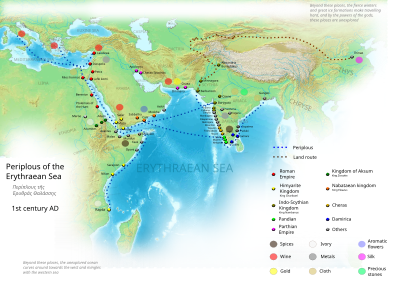
The Arabian Sea has been an important marine trade route since the era of the coastal sailing vessels from possibly as early as the 3rd millennium BCE, certainly the late 2nd millennium BCE through the later days known as the Age of Sail. By the time of Julius Caesar, several well-established combined land-sea trade routes depended upon water transport through the sea around the rough inland terrain features to its north.
These routes usually began in the Far East or down river from Madhya Pradesh, India with transshipment via historic Bharuch (Bharakuccha), traversed past the inhospitable coast of modern-day Iran, then split around Hadhramaut, Yemen into two streams north into the Gulf of Aden and thence into the Levant, or south into Alexandria via Red Sea ports such as Axum. Each major route involved transhipping to pack animal caravan, travel through desert country and risk of bandits and extortionate tolls by local potentates.
This southern coastal route past the rough country in the southern Arabian Peninsula was significant, and the Egyptian Pharaohs built several shallow canals to service the trade, one more or less along the route of today's Suez Canal, and another from the Red Sea to the Nile River, both shallow works that were swallowed up by huge sand storms in antiquity. Later the kingdom of Axum arose in Ethiopia to rule a mercantile empire rooted in the trade with Europe via Alexandria.
Major ports
Jawaharlal Nehru Port in Mumbai is the largest port in the Arabian Sea, and the largest container port in India. Major Indian ports in the Arabian Sea are Mundra Port, Kandla Port, Nava Sheva, Vizhinjam International Seaport The Vizhinjam International Deepwater Multipurpose Seaport, also known as the Vizhinjam International Seaport and the Port of Trivandrum . Kochi Port, Mumbai Port, and Mormugão.

The Port of Karachi, Pakistan's largest and busiest seaport lies on the coast of the sea. It is located between the Karachi towns of Kiamari and Saddar.
The Gwadar Port of Pakistan is a warm-water, deep-sea port situated at Gwadar in Balochistan at the apex of the Arabian Sea and at the entrance of the Persian Gulf, about 460 km west of Karachi and approximately 75 km (47 mi) east of Pakistan's border with Iran. The port is located on the eastern bay of a natural hammerhead-shaped peninsula jutting out into the Arabian Sea from the coastline.
Port of Salalah in Salalah, Oman is also a major port in the area. The International Task Force often uses the port as a base. There is a significant number of warships of all nations coming in and out of the port, which makes it a very safe bubble. The port handled just under 3.5m teu in 2009.
Season names of shipping weather
Bat furan
The winter, when Siberian anticyclone makes monsoon winds favourable to shipping.
Bat hiddan
The summer, when off-shore winds from Somaliland causes storms and shipping decrease as the result of them.
Islands

There are several islands in the Arabian Sea, with the most important ones being Lakshadweep Islands (India), Socotra (Yemen), Masirah (Oman) and Astola Island (Pakistan).
The Lakshadweep Islands (formerly known as the Laccadive, Minicoy, and Aminidivi Islands) is a group of islands in the Laccadive Sea region of Arabian Sea, 200 to 440 km (120 to 270 mi) off the southwestern coast of India. The archipelago is a union territory and is governed by the Union Government of India. The islands form the smallest union territory of India with their total surface area being just 32 km (12 sq mi). The islands are the northernmost of the Lakshadweep-Maldives-Chagos group of islands.
Astola Island, also known as Jezira Haft Talar in Balochi, or 'Island of the Seven Hills', is a small, uninhabited island in the northern tip of the Arabian Sea in Pakistan's territorial waters.
Socotra, also spelled Soqotra, is the largest island, being part of a small archipelago of four islands. It lies some 240 km (150 mi) east of the Horn of Africa and 380 km (240 mi) south of the Arabian Peninsula.
Masirah is an island off the east coast of Oman.
Oxygen Minimum Zone

The Arabian Sea has one of the world's three largest oceanic oxygen minimum zones (OMZ), or “dead zones,” along with the eastern tropical North Pacific and the eastern tropical South Pacific. OMZs have very low levels of oxygen, sometimes undetectable by standard equipment. The Arabian Sea's OMZ has the lowest levels of oxygen in the world, especially in the Gulf of Oman. Causes of the OMZ may include untreated sewage as well as high temperatures on the Indian subcontinent, which increase winds blowing towards India, bringing up nutrients and reducing oxygen in the Arabian Sea's waters. In winter, phytoplankton suited to low-oxygen conditions turn the OMZ bright green.
See also
References
- Banse, Karl, and Charles R. McClain. "Winter blooms of phytoplankton in the Arabian Sea as observed by the Coastal Zone Color Scanner." Marine Ecology Progress Series (1986): 201-211.
- Pham, J. Peter. "Putting Somali piracy in context." Journal of Contemporary African Studies 28.3 (2010): 325-341.
- ^ Arabian Sea, Encyclopædia Britannica
- "Limits of Oceans and Seas, 3rd edition" (PDF). International Hydrographic Organization. 1953. Archived from the original (PDF) on 7 December 2017. Retrieved 28 December 2020.
- "Middle East :: Iran — The World Factbook - Central Intelligence Agency". www.cia.gov.
- "Introduction to Pakistan: Section 5: Coastline". www.wildlifeofpakistan.com.
- ^ "Kamat's Potpourri: The Arabian Sea". kamat.com.
- "The Voyage around the Erythraean Sea". washington.edu.
- "Kamat's Potpourri: The Arabian Sea". www.kamat.com.
- "The Voyage around the Erythraean Sea". depts.washington.edu.
- "Archived copy". Archived from the original on 2013-12-02. Retrieved 2012-04-03.
{{cite web}}: CS1 maint: archived copy as title (link) - Documents on the Persian Gulf's name the eternal heritage ancient time by Dr.Mohammad Ajam
- "TRAFFIC HANDLED AT MAJOR PORTS (LAST 7 YEARS)" (PDF). shipping.gov.in.
- "WORLD PORT RANKINGS" (PDF). aapa.files.cms-plus.com. 2009.
- Salalah’s versatility beats the slump Archived October 25, 2012, at the Wayback Machine, Port of Salalah
- Lüke, Claudia; Speth, Daan R.; Kox, Martine A. R.; Villanueva, Laura; Jetten, Mike S. M. (2016-04-07). "Metagenomic analysis of nitrogen and methane cycling in the Arabian Sea oxygen minimum zone". PeerJ. 4: e1924. doi:10.7717/peerj.1924. ISSN 2167-8359. PMC 4830246. PMID 27077014.
{{cite journal}}: CS1 maint: unflagged free DOI (link) - Queste, Bastien Y.; Vic, Clément; Heywood, Karen J.; Piontkovski, Sergey A. (2018). "Physical Controls on Oxygen Distribution and Denitrification Potential in the North West Arabian Sea". Geophysical Research Letters. 45 (9): 4143–4152. Bibcode:2018GeoRL..45.4143Q. doi:10.1029/2017GL076666. ISSN 1944-8007.
- Bhanoo, S.N. "A Green Blanket on the Arabian Sea". The New York Times.
Sources
![]() This article incorporates text from a publication now in the public domain: Chisholm, Hugh, ed. (1911). "Arabian Sea". Encyclopædia Britannica (11th ed.). Cambridge University Press.
This article incorporates text from a publication now in the public domain: Chisholm, Hugh, ed. (1911). "Arabian Sea". Encyclopædia Britannica (11th ed.). Cambridge University Press.
External links
![]() Media related to Arabian Sea at Wikimedia Commons
Media related to Arabian Sea at Wikimedia Commons
| Hydrography of the Indian subcontinent | |
|---|---|
| Inland rivers | |
| Inland lakes, deltas, etc. | |
| Coastal | |
| Categories |
|
| Countries bordering the Arabian Sea | |
|---|---|